Biểu đồ PERTlà viết tắt của (Kỹ thuật Đánh giá và Xem xét Chương trình). Biểu đồ PERT là một công cụ quản lý dự án được sử dụng để lập lịch, tổ chức và phối hợp các nhiệm vụ trong một dự án. Nó về cơ bản là một phương pháp để phân tích các nhiệm vụ liên quan đến việc hoàn thành một dự án nhất định, đặc biệt là thời gian cần thiết để hoàn thành mỗi nhiệm vụ, và để xác định thời gian tối thiểu cần thiết để hoàn thành toàn bộ dự án.
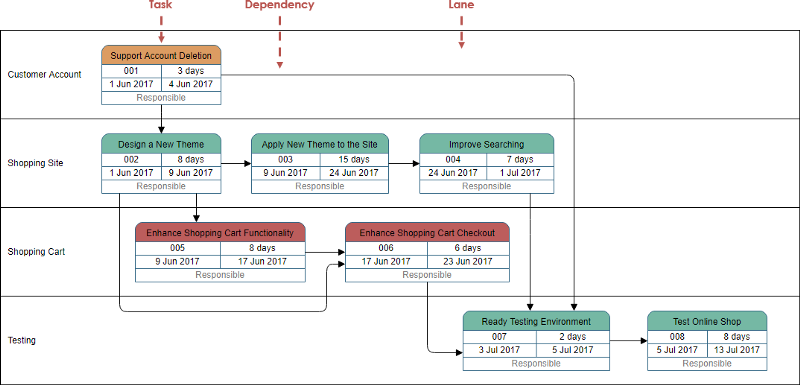
Biểu đồ PERT là gì?
Mục tiêu chính của PERT là tạo điều kiện cho việc ra quyết định và giảm cả thời gian và chi phí cần thiết để hoàn thành một dự án. PERT được thiết kế cho các dự án quy mô lớn, một lần, không theo quy trình, phức tạp với mức độ phụ thuộc giữa các nhiệm vụ cao, các dự án yêu cầu một loạt các hoạt động, một số trong đó phải được thực hiện theo trình tự và những hoạt động khác có thể được thực hiện song song với các hoạt động khác.
PERT là một phương pháp phân tích các nhiệm vụ liên quan đến việc hoàn thành một dự án nhất định, đặc biệt là thời gian cần thiết để hoàn thành mỗi nhiệm vụ, và để xác định thời gian tối thiểu cần thiết để hoàn thành toàn bộ dự án.
PERT trong quản lý dự án đã tồn tại một thời gian, nhưng thực tế nó được phát triển trong Hải quân Hoa Kỳ. Năm 1957, Văn phòng Dự án Đặc biệt của họ đã tạo ra biểu đồ PERT để hỗ trợ cho dự án tàu ngầm hạt nhân Polaris. Kể từ đó, nó đã tìm thấy chỗ đứng trong mọi ngành công nghiệp, thậm chí cả Thế vận hội Mùa đông 1968 ở Grenoble.
Ký hiệu Biểu đồ PERT
Nhiệm vụ
Trong Visual Paradigm, một Nhiệm vụ có:
- Tên Nhiệm vụ
- ID Nhiệm vụ
- Thời gian
- Ngày Bắt đầu và Ngày Kết thúc

Phụ thuộc
Liên kết kết nốicác nhiệm vụ dự án để chỉ ra mối quan hệ phụ thuộc thời giangiữa chúng, tức là, khi nhiệm vụ trước đó được hoàn thành, nhiệm vụ tiếp theo có thể bắt đầu.
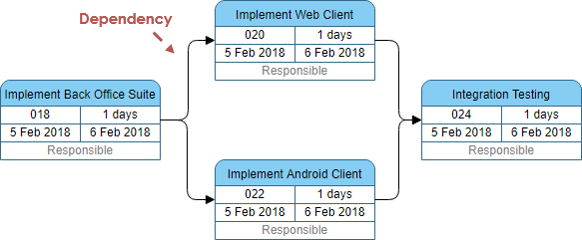
Các Tính năng Nâng cao của Biểu đồ PERT
Visual Paradigm đã nâng cao ký hiệu biểu đồ PERT cơ bản bằng cách thêm hai tính năng quản lý dự án mạnh mẽ:
- Làn — để phân chia các nhiệm vụ dựa trên các danh mục như bên nào chịu trách nhiệm cho cái gì (nhiệm vụ) trong Biểu đồ PERT.
- Gán và Quản lý Nhiệm vụ Tự động — để gán nhiệm vụ trong Biểu đồ PERT cho Trình quản lý Nhiệm vụ của Visual Paradigm — Tasifier.
Làn
Một làn cho phép bạn sắp xếp Biểu đồ PERT của bạn thành các vùng ngang được phân tách bằng các đường. Mỗi vùng đại diện cho trách nhiệm của lớp, công nhân cụ thể hoặc bất kỳ khái niệm nào mà nhóm nhiệm vụ mà nó chịu trách nhiệm.
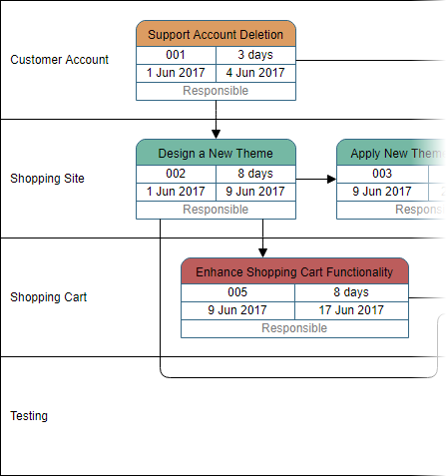
Gán Nhiệm vụ PERT cho Tasifier
Ngoài các chức năng của một Biểu đồ PERT thông thường, công cụ Biểu đồ PERT Nâng cao đã tích hợp bốn tính năng chính để tích hợp với các quy trình khác nhau với Tasifier, công cụ Quản lý Nhiệm vụ:
- Lựa chọn Người chịu trách nhiệm (liên kết nhiệm vụ với người chịu trách nhiệm)
- Nhiệm vụ đến Trình quản lý Nhiệm vụ (Tasifier của Visual Paradigm)

Khi nào vẽ Biểu đồ PERT
Các nhà quản lý dự án có thể sử dụng biểu đồ PERT để giải quyết các vấn đề sau:
- Lập kế hoạch một thời gian biểu thực tế cho việc hoàn thành dự án.
- Xác định đường đi quan trọng — vì con đường dẫn đến thời gian tối thiểu mà dự án yêu cầu, bất kỳ sự chậm trễ nào đối với các nhiệm vụ này sẽ ảnh hưởng đến việc hoàn thành toàn bộ dự án.
- Xác định các nhiệm vụ có thể được thực hiện đồng thời.
- Xác định các nhiệm vụ cần được nén lại nếu thời gian tổng thể của dự án cần được giảm bớt.
- Xác định thời gian dự trữ nơi mà một số nhiệm vụ không quan trọng về thời gian đối với thời hạn tổng thể.
Cách vẽ Biểu đồ PERT?
Lập kế hoạch PERT bao gồm các bước sau:
- Xác định các hoạt động và cột mốc cụ thể.
- Xác định trình tự thích hợp của các hoạt động.
- Xây dựng một sơ đồ PERT.
- Ước lượng thời gian cần thiết cho mỗi hoạt động.
- Xác định đường đi quan trọng.
- Cập nhật biểu đồ PERT khi dự án tiến triển.
Ví dụ về Biểu đồ PERT
Ví dụ Chuẩn bị Dự án — Biểu đồ PERT sau đây cho thấy:
Giả sử một nhà phân tích hệ thống đang cố gắng thiết lập một lịch trình thực tế cho các giai đoạn thu thập dữ liệu và đề xuất trong vòng đời phân tích và thiết kế hệ thống. Nhà phân tích hệ thống xem xét tình hình và liệt kê các hoạt động cần được thực hiện trong quá trình này, và đã tạo ra một Biểu đồ PERT như sau:

Mẫu Phát triển Phần mềm — Ví dụ về biểu đồ PERT dưới đây cho thấy:
Một mẫu chung cho quản lý dự án phần mềm từ phân tích, thiết kế, xây dựng và kiểm tra với các giai đoạn trong làn.
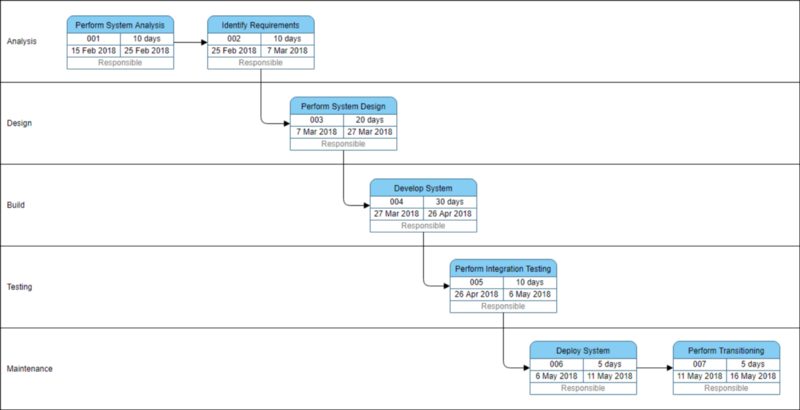
Ví dụ về Tạo Website — Ví dụ về biểu đồ PERT dưới đây cho thấy:
Biểu đồ PERT cho thấy các nhiệm vụ liên quan trong quá trình tạo một website, bao gồm, chọn dịch vụ lưu trữ, thiết kế website, viết HTML, thiết kế đồ họa, và v.v.
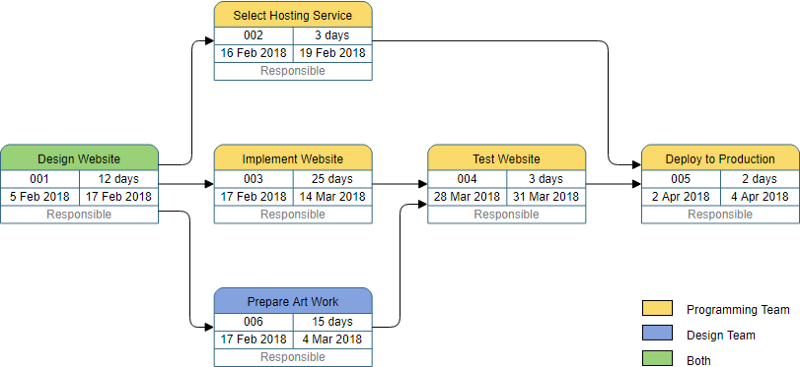
Mẫu PERT — Nhiệm vụ với các cột mốc:

Ví dụ về Biểu đồ PERT — Quản lý Dự án:
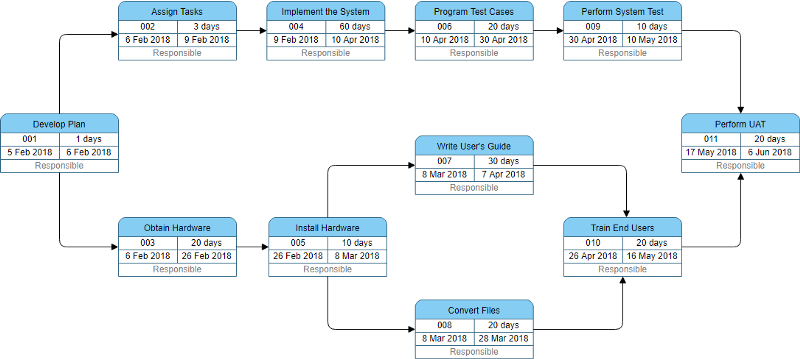
Mẫu Biểu đồ Pert
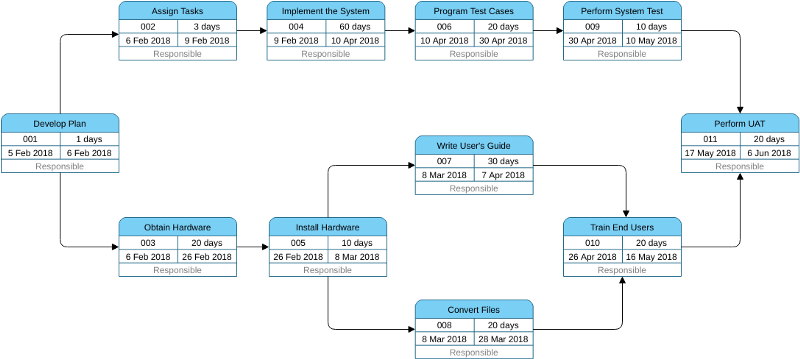

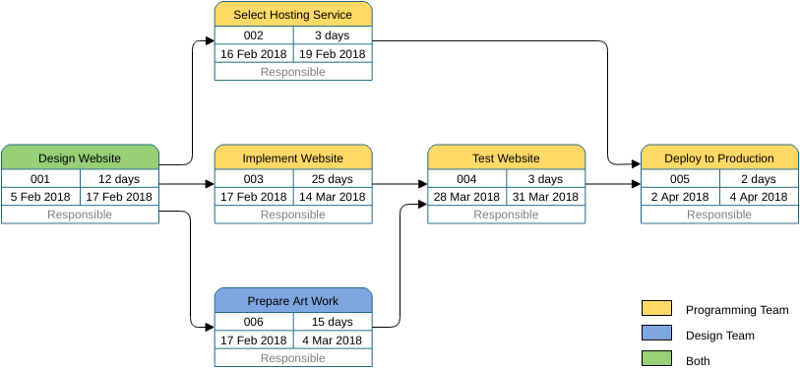
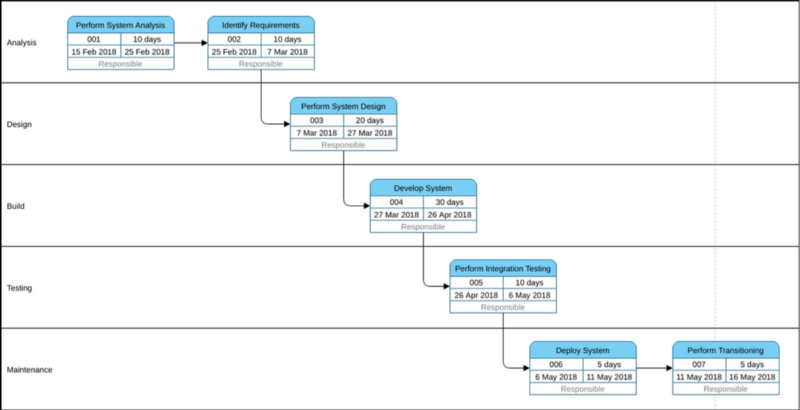

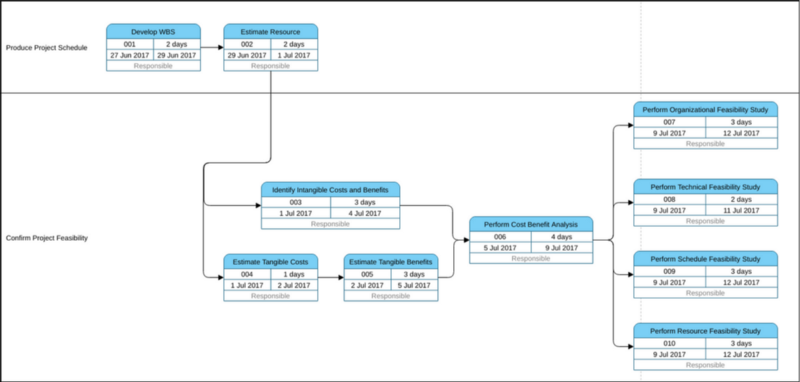
Phát triển Biểu đồ PERT từ Danh sách Nhiệm vụ Cấu trúc
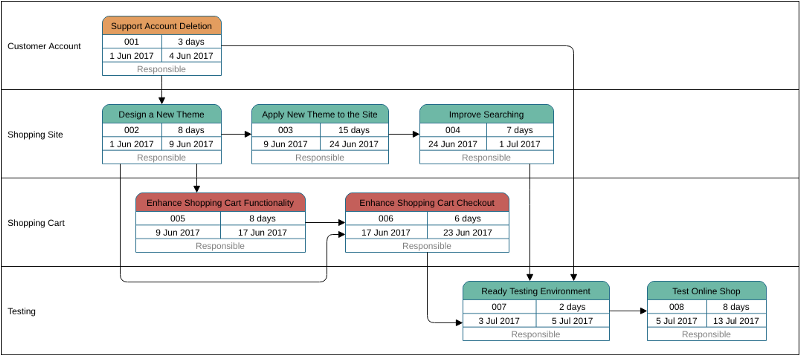
Biểu đồ Pert Nâng cao cho Tự động hóa Quản lý Nhiệm vụ
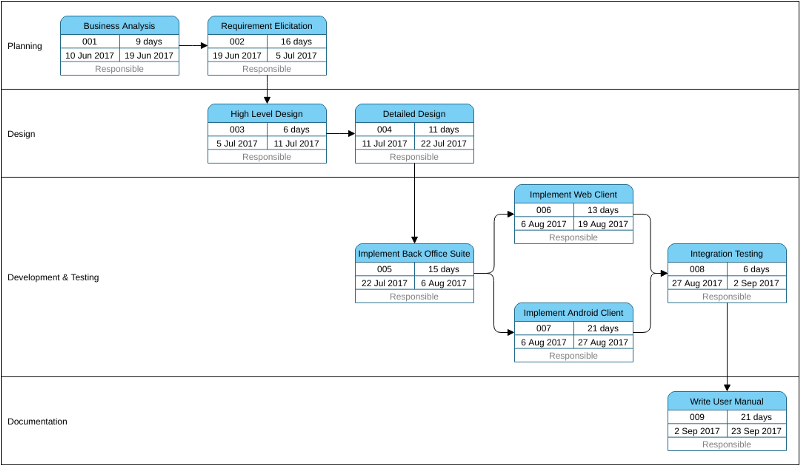
Thêm Về Biểu đồ Pert
This post is also available in Deutsch, English, Español, فارسی, Français, Bahasa Indonesia, 日本語, Polski, Portuguese, Ру́сский, 简体中文 and 繁體中文.













